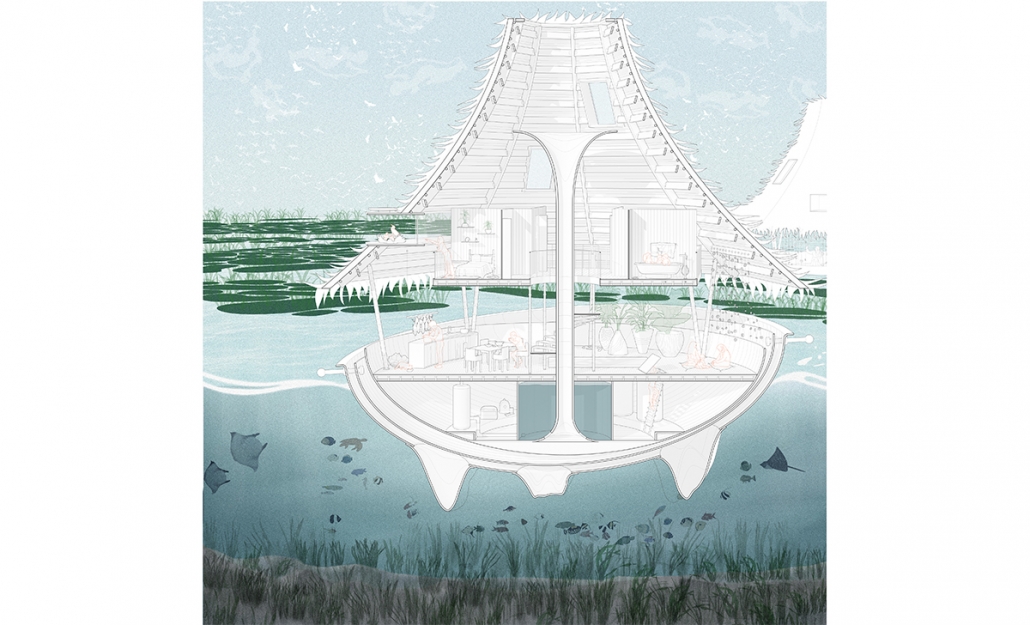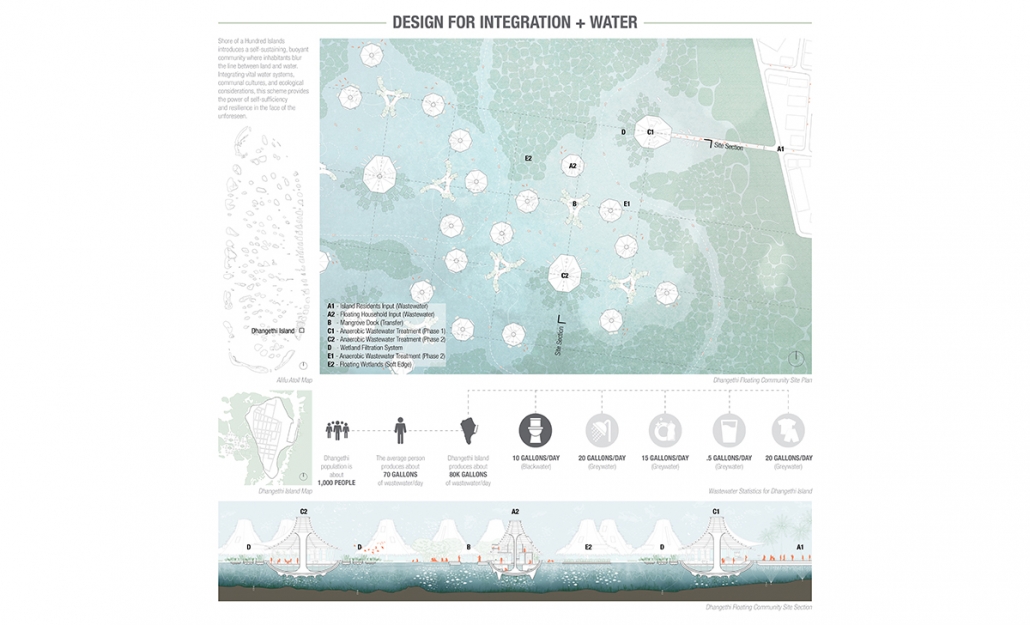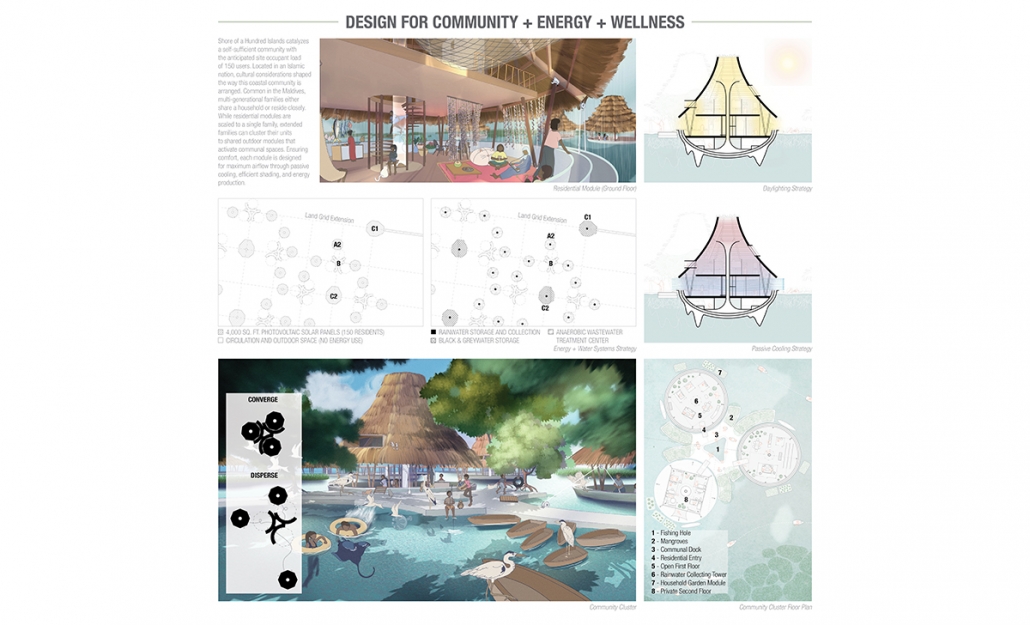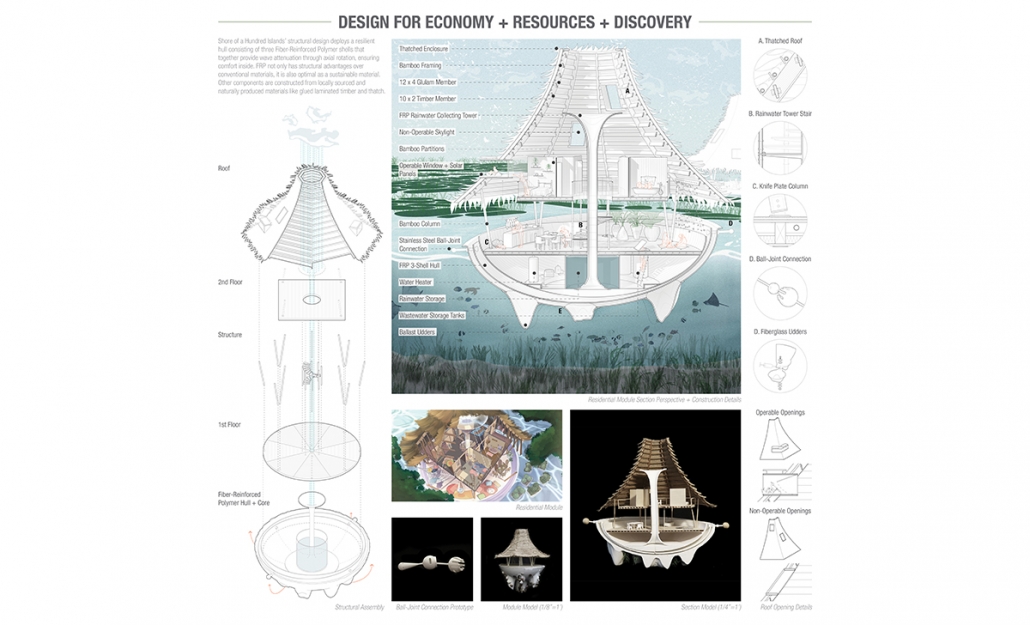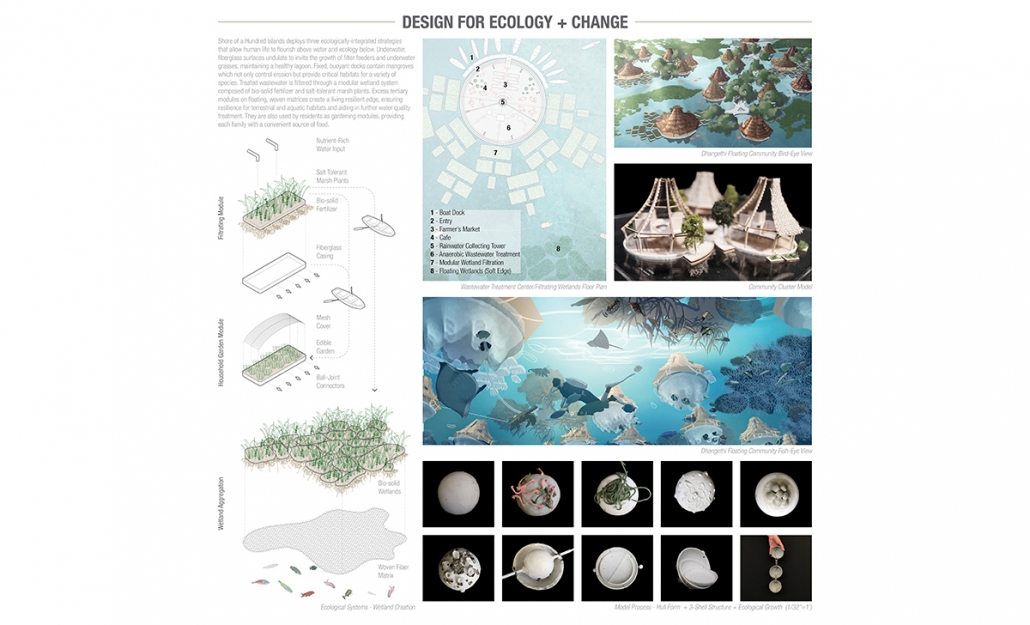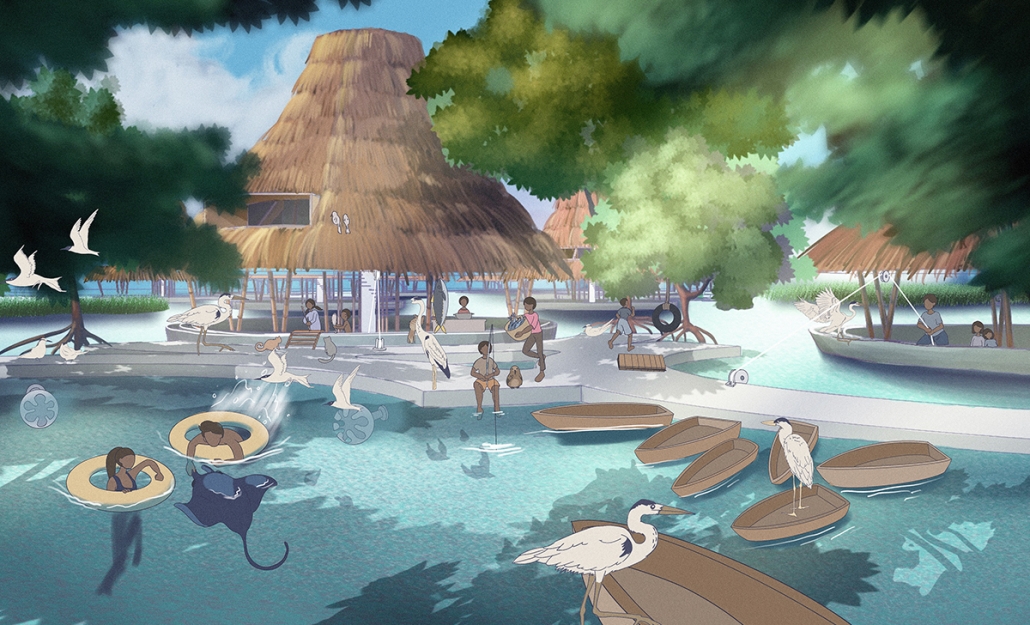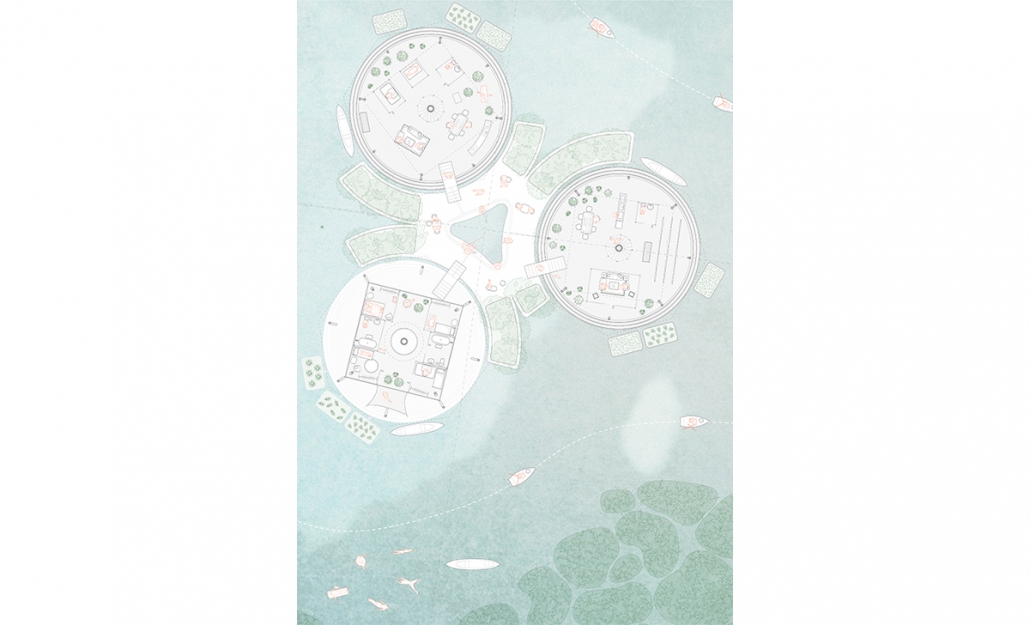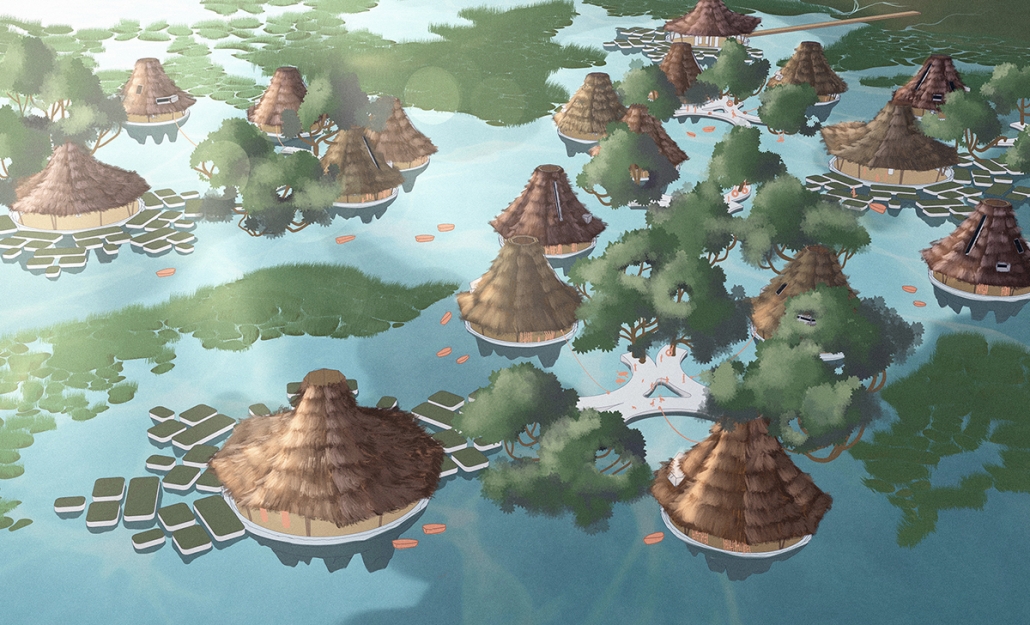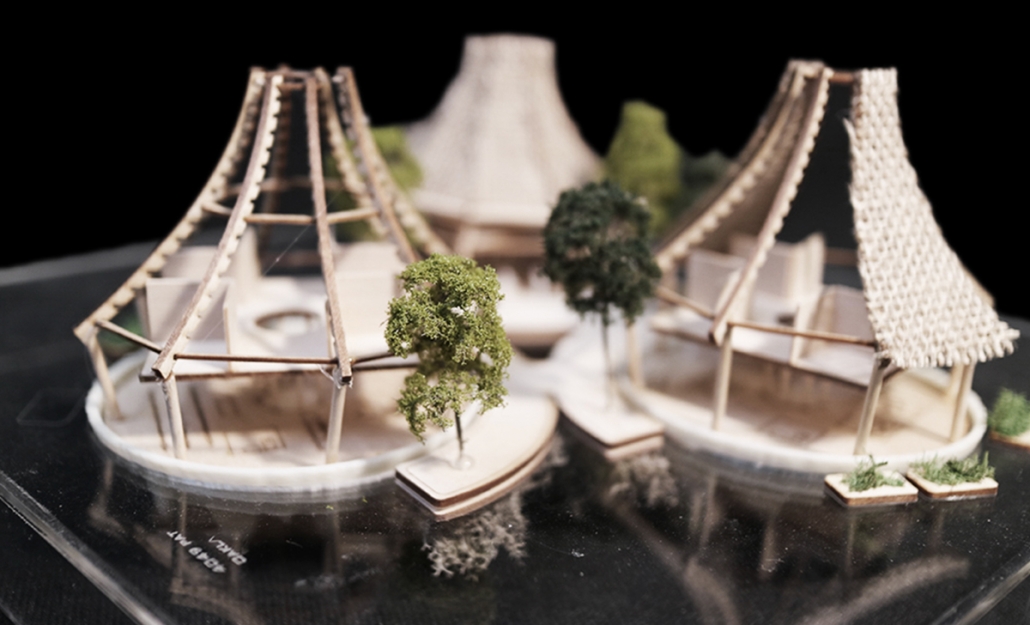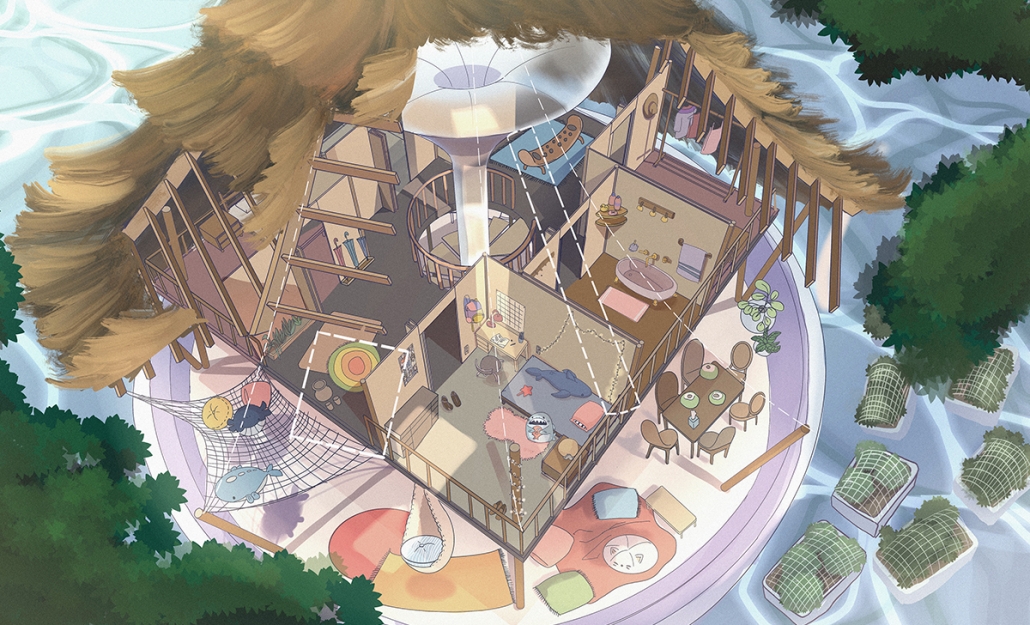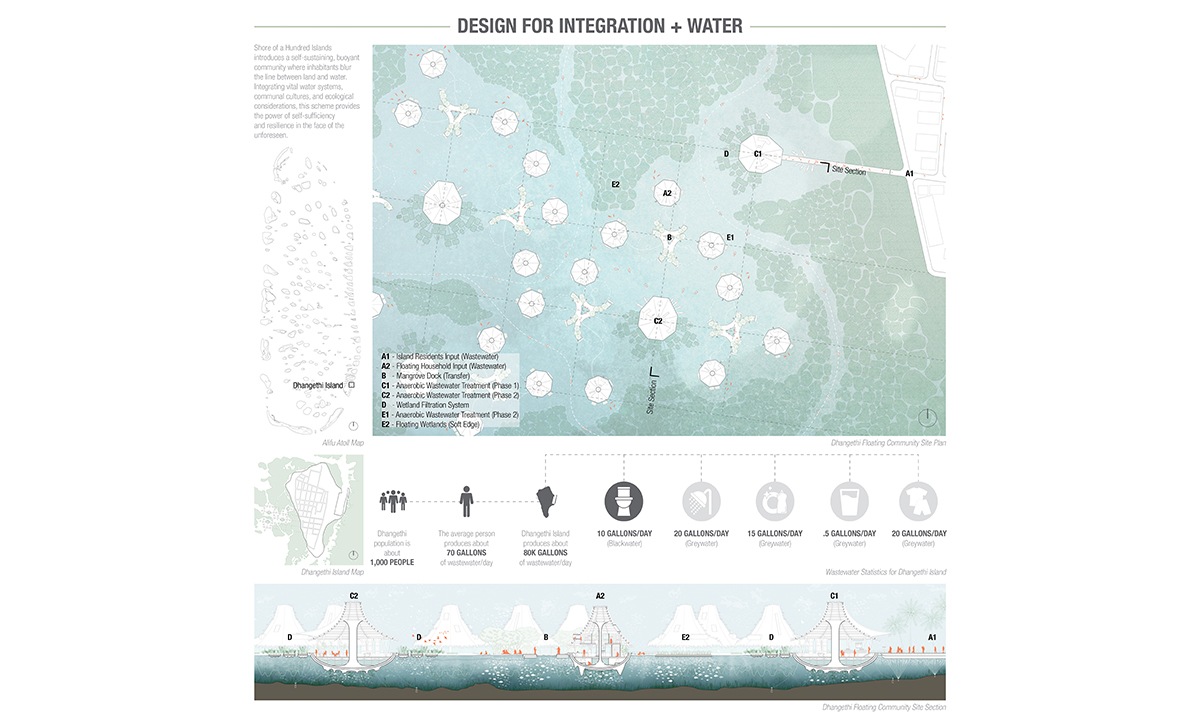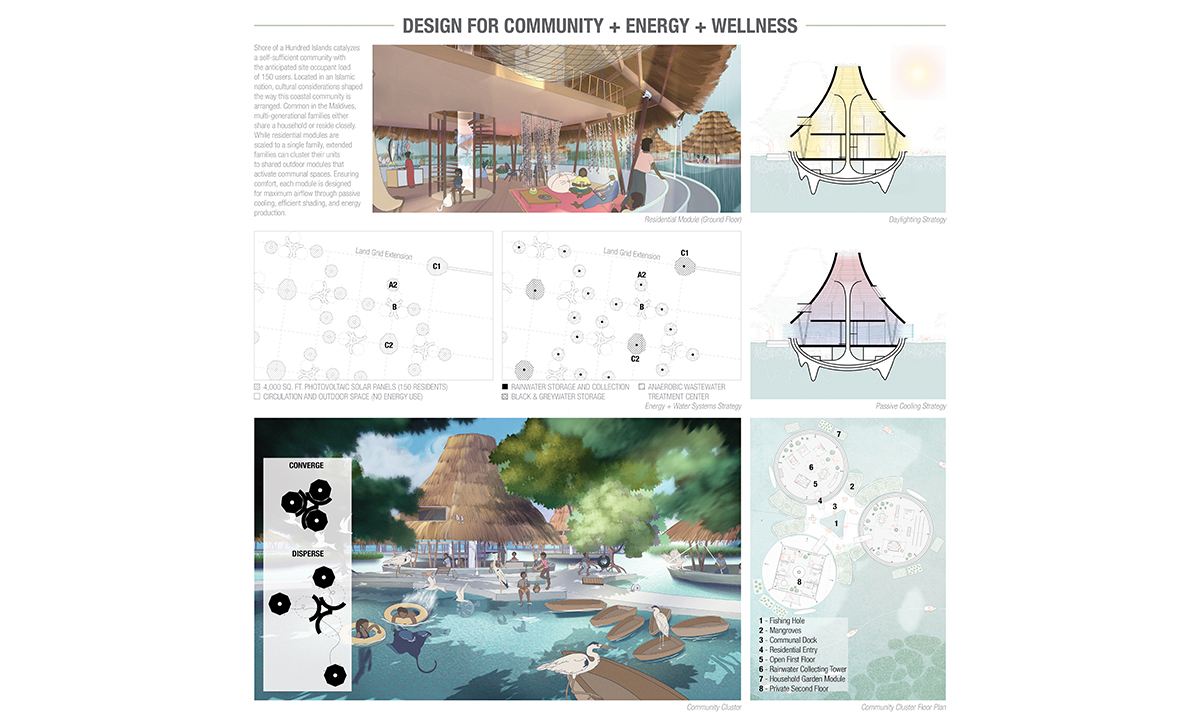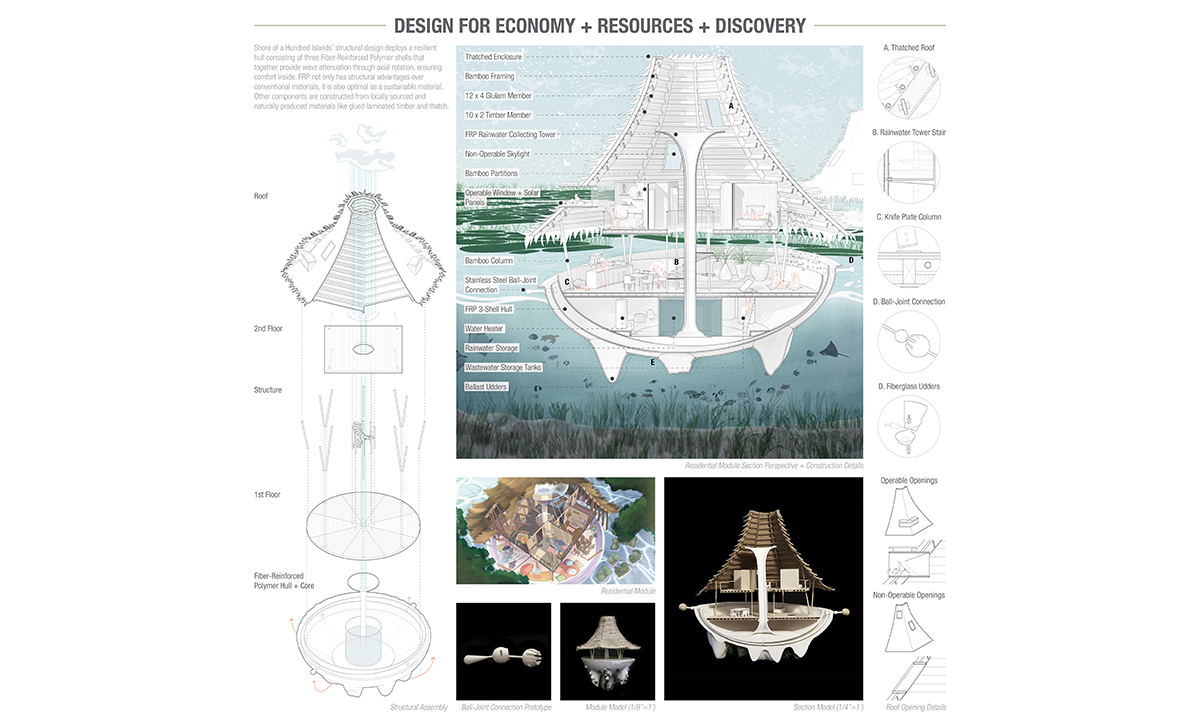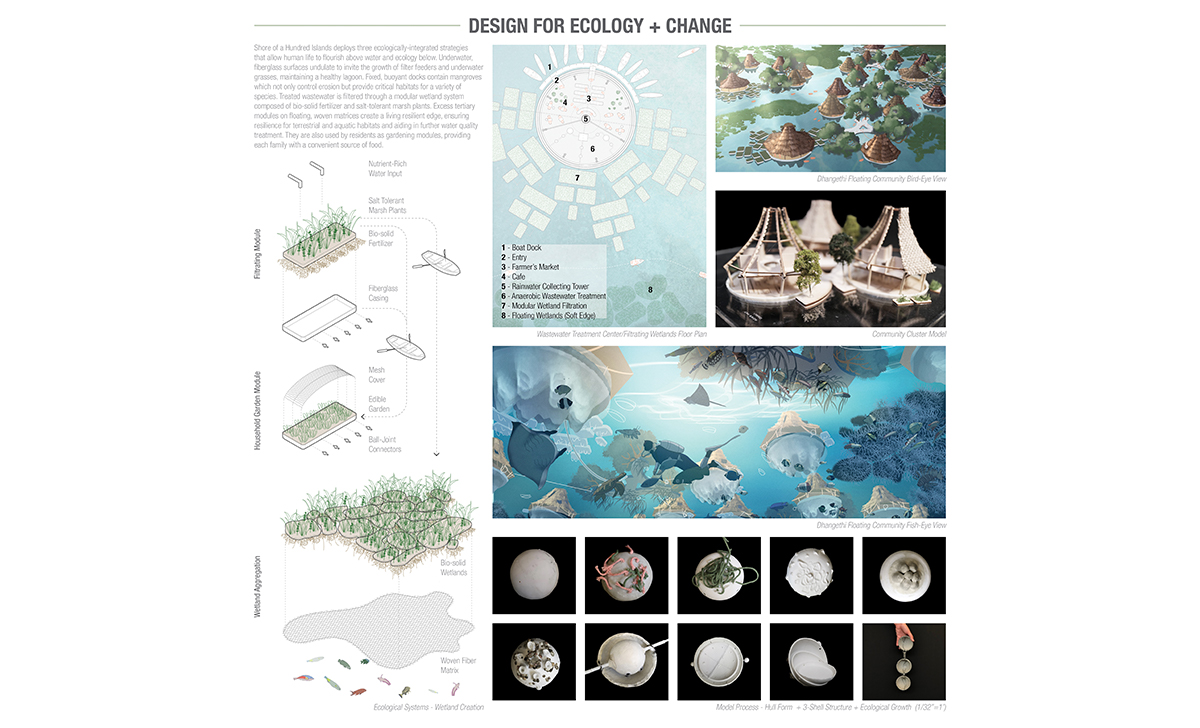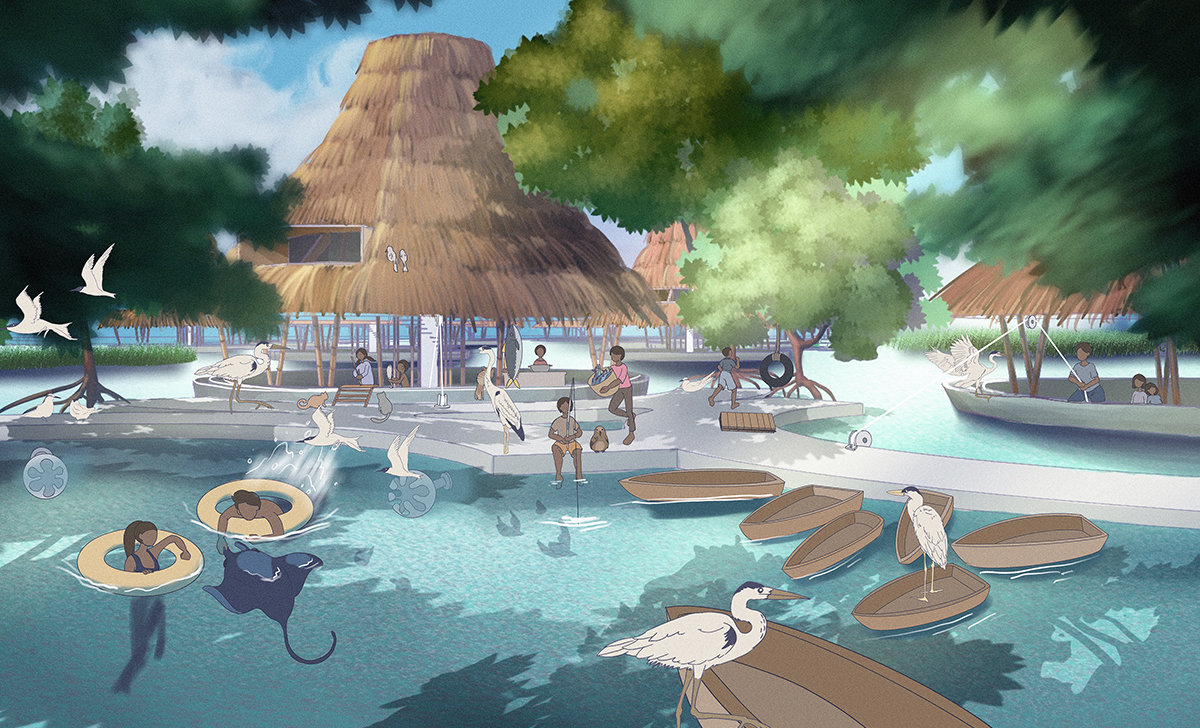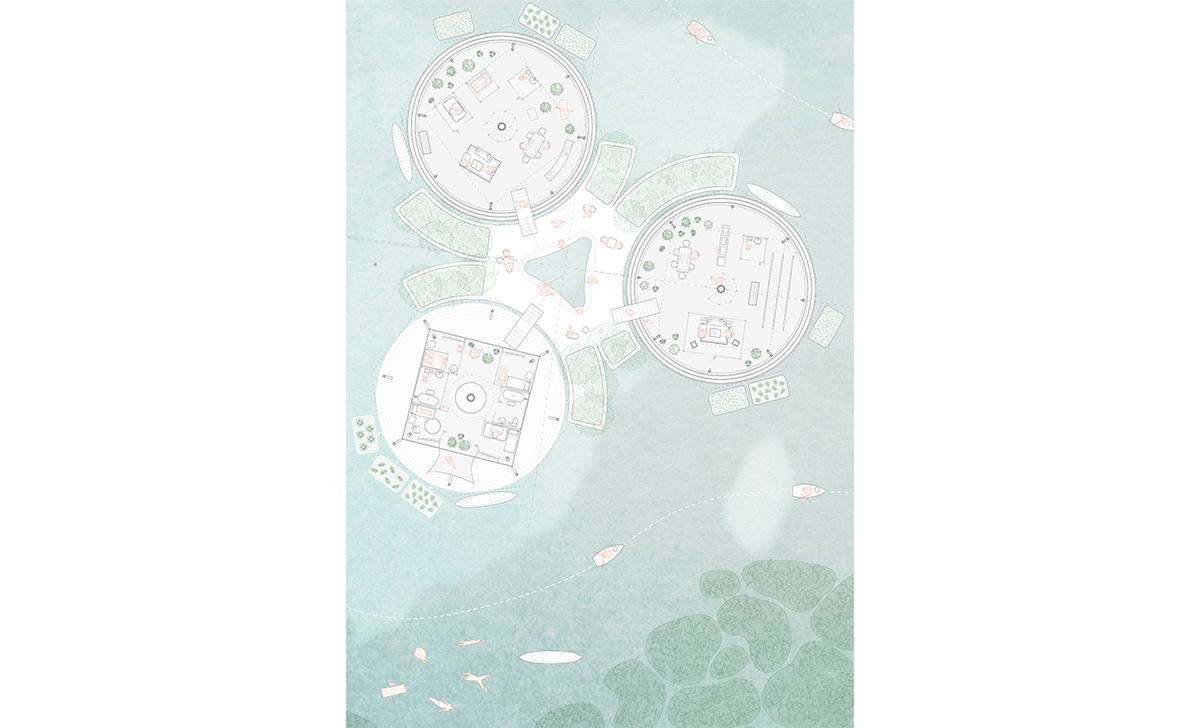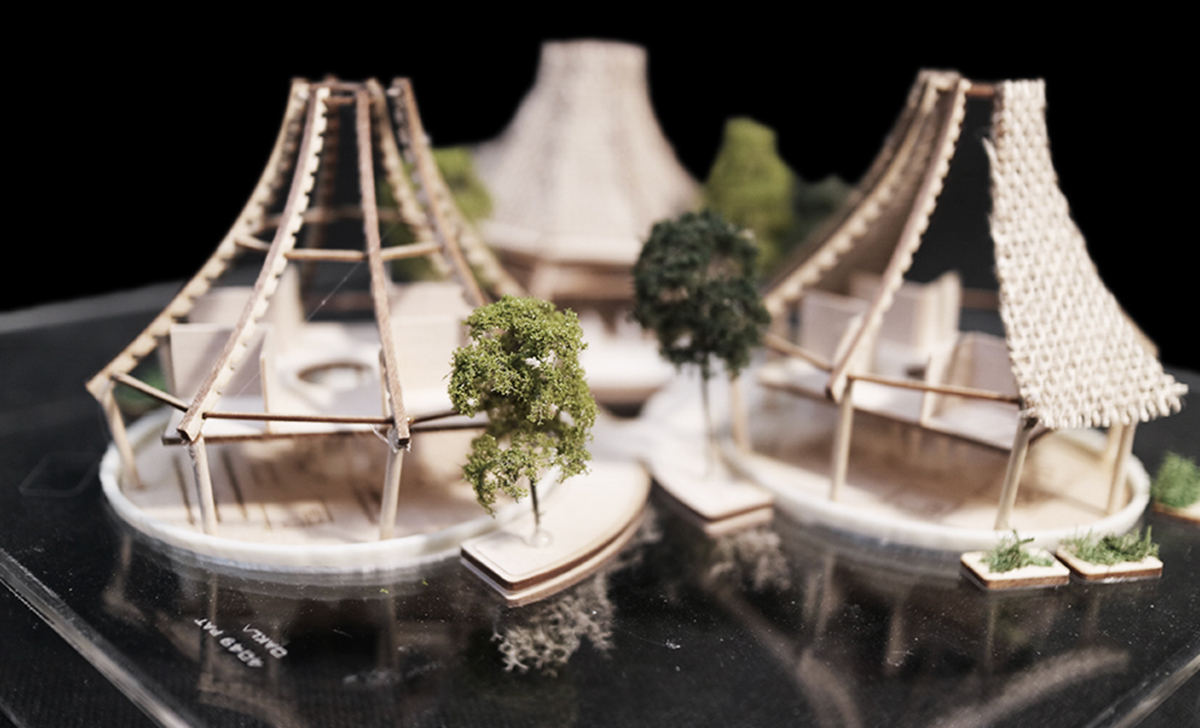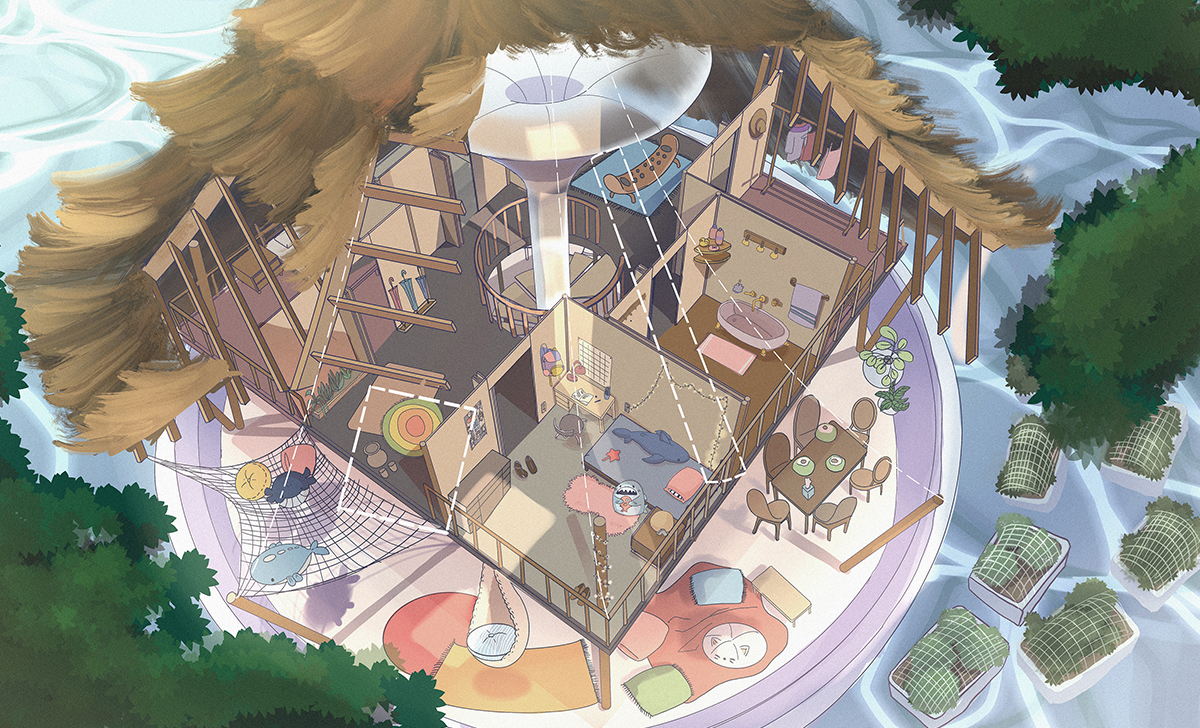2018-2019 COTE Top Ten Winners
Winner: Shore of a Hundred Islands
Viviani Isnata & Maria Ulloa
Juror Comments
Shore of a Hundred Islands presents an imaginative approach towards the growing issue of rising sea levels. It demonstrates a compelling intersection of traditional form and modern function while also giving careful consideration to aquatic ecology. Within strict programmatic and environmental constraints, the design provides solutions to cultivating both community and privacy.
Project Description
Shore of a Hundred Islands introduces a self-sustaining, buoyant community where inhabitants blur the line between land and water. The Maldives and its thousands of islands, a vulnerably low-lying country, are increasingly threatened by sea level rise, flooding, and inefficient infrastructure. The remote location of the island and the inefficiency of its current systems makes it dependent upon imported food and water. The project incorporates water collection and food production while integrating a wastewater treatment system to create a self-sufficient network that makes use of three fruitful outputs: bio-solids, methane gas, and nutrient-rich water.
Located in an Islamic nation, cultural considerations shaped the way this coastal community is arranged. Common in the Maldives, multi-generational families either share a household or reside closely. While residential modules are scaled to a single family, extended families can cluster their units to shared outdoor modules that activate communal spaces. The structure of residential modules allows for transparent common spaces on the first floor like kitchens and living rooms, and sheltered private spaces on the second like bedrooms and bathrooms. When converged, families can extend their common spaces to cultivate larger community spaces.
The project deploys three ecologically-integrated strategies that allow human life to flourish above water and ecology below. Underwater, fiberglass surfaces undulate to invite the growth of filter feeders and underwater grasses, maintaining a healthy lagoon. Fixed, buoyant docks contain mangroves which not only control erosion but provide critical habitats for a variety of species. Treated wastewater is filtered through a modular wetland system composed of bio-solid fertilizer and salt-tolerant marsh plants. Excess modules on floating, woven matrices create a living resilient edge, ensuring resilience for terrestrial and aquatic habitats and aiding in further water quality treatment.
Residential and public modules each collect rainwater through their roof openings and fiberglass, collecting towers. Each residential unit provides a strategically measured roof opening to allow for just enough rainwater to be collected at time of shortage and stored within the inner hull. While each of these modules stores enough rainwater to fully supply its residents with potable water, public space modules function similarly but at a larger scale, providing a back-up water source. Wastewater from residential modules is pumped through outdoor modules to public space modules that, though an anaerobic treatment process, creates reusable resources.
Shore of a Hundred Islands strategically uses materials that ensure occupant comfort and design longevity. Module components which sit in the water (docks and hulls) are constructed from Fiber-Reinforced Polymer. Although a more costly material, FRP ensures structural integrity and prevents salt-water corrosion through the use of reusable molds and compartmentalized transport. The modules’ structure consists of a timber armature and thatched enclosure, both locally sourced from the Maldives. These local materials embrace traditional and cultural uses while providing occupant comfort through ventilation, lighting, and waterproofing.
As an off-grid, coastal community, Shore of a Hundred Islands provides all necessary resources in the design. Residential and public modules contain photovoltaic panels on their roofs that provide energy for electricity and water heating. Methane output from wastewater treatment is used to power cooking and laundry appliances. Each module is designed for maximum airflow through passive cooling. Specifically, negative-pressure air enters and travels upwards to create positive-pressure air that exits through the open roof. The thatched roof enclosure acts as a natural insulator, keeping the inside cool, while shading the modules for solar comfort.
Shore of a Hundred Islands seeks to nurture the already-existing connectedness Maldivians have with the ocean. The overall site strategy provides an open design that visually connects inhabitants to one another and to their surroundings. This allows for natural, diffused lighting and maximum airflow through passive cooling, effectively providing occupant comfort in the hot and humid climate of the Maldives. While the roof aserves to shade the modules from the harsh sun, varying openings allow for additional pockets of daylight and ventilation on the second story.
Fiber-Reinforced Polymer not only has structural advantages over conventional materials, it is also optimal as a sustainable material. LEED recognized, the manufacturing of FRP composites produces less greenhouse gases, requires less energy, and can incorporate efficient, reusable molds. Other components of this project are constructed from glued laminated timber and thatch (layered coconut fibers). Both are locally sourced and naturally produced materials, providing little to no transportation costs and a reduction of the project’s carbon footprint. While the glulam members provide a structurally durable and open armature, the layered, thatched enclosure can last for nearly 25 years and composts naturally.
Shore of a Hundred Islands seeks to preserve the legacy of Maldivians as their nation becomes more and more precarious due to rising sea levels. The site strategy for this project includes a network of modules that, through a calculated aggregation, can expand over time, providing land inhabitants with a transition to life on the water. Modules are structurally resilient to the conditions of the water through an engineered and wave-attenuating gimbal-shelled hull. Together, they form an off-the-grid community that is self-sufficient and self-aware in the face of environmental changes.
The project is designed to take advantage of the special potentials of buoyant living arrangements which allow for an adaptive, scalable system. The infrastructural systems facilitate the harvesting of resources that allow the community to grow in harmony with the ecology. With the help of naval architects, structural engineers, fabricators, comfort specialists, and marine biologists, Shore of a Hundred Islands was rigorously developed to envision a design that integrates these systems to provide ideal occupancy. New ways of living with the prospect of increasingly threatened land suggest an optimistic approach to maintaining a connection to locations threatened by climate change.

 Study Architecture
Study Architecture  ProPEL
ProPEL 